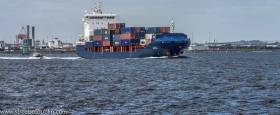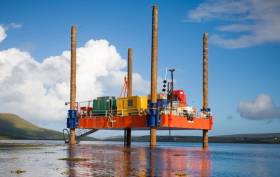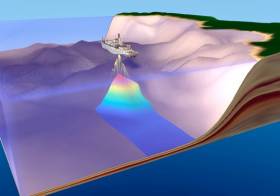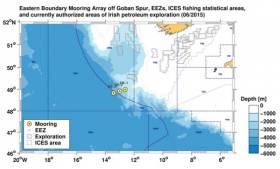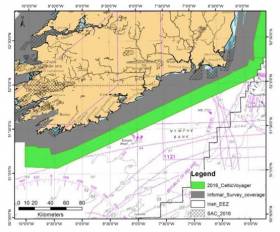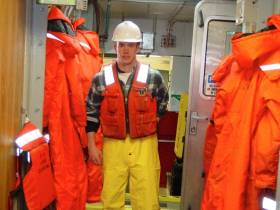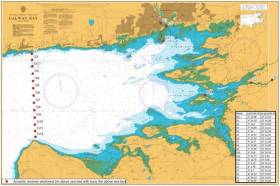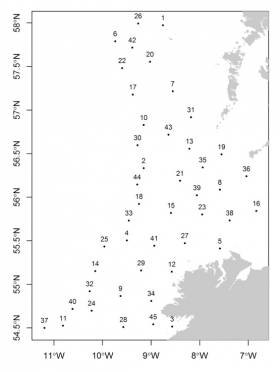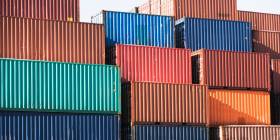Displaying items by tag: Marine Notice
Warning Over Fraudulent Seafarer Certificates
#MarineNotice - Marine Notice No 19 of 2016 advises that the Department of Transport, Tourism and Sport (DTTAS) has become aware of a small number of possible fraudulent Irish seafarer certificates, and an associated fraudulent website, which purports to verify such fraudulently issued seafarer certification.
The department advises that Irish seafarer certification is only issued by the DTTAS and that all Irish certificates are to be verified at the following address:
Mercantile Marine Office
Irish Maritime Administration
Department of Transport, Tourism and Sport
Leeson Lane, Dublin 2
DO2 TR60
Ireland
Email: [email protected] Tel: +353 1 6783480
In addition, Ireland has agreements under the IMO STCW Convention and EU legislation as set out in Marine Notice No 6 of 2011 with various administrations for the recognition of certificates of competency for merchant ships.
Maritime administrations, companies and seafarers seeking to verify Irish seafarer certification should only do so with the Irish Maritime Administration directly as above.
#MarineNotice - The latest Marine Notice from the Department of Transport, Tourism and Sport (DTTAS) advises that Shell E & P Ireland Ltd will undertake its annual pipeline and umbilical survey at the Corrib field location and along the pipeline corridor to the landfall at Broadhaven Bay.
There will also be a programme of maintenance and inspection conducted on the subsea facilities when the first phase of works begins later this week. This work will all take place within the 500m Safety Zone and will involve carrying out a programme of maintenance to investigate and repair some of the subsea facilities as required.
Phase 2, the pipeline and umbilical inspection, will be undertaken from 54°20.34’N, 011°03.51’W (Corrib Offshore Field Location) to 54° 17.00’N, 009° 49.24’ W (landfall).
The area of activity stretches along the route of the existing Corrib offshore gas pipeline and umbilical route. The pipeline and umbilical surveys will be separate activities. The work involves acoustic and visual survey of the pipeline and umbilical.
The Phase 1 work will commence in mid April and is expected to be completed by the end of the month. The Phase 2 work will commence upon completion of Phase 1 and is expected to be completed by the end of May.
The Olympic Ares (Callsign C6AW7) will undertake the deep water surveys and the subsea facilities maintenance and inspection. All equipment used will be vessel- and/or ROV-mounted. The vessel will be listening on VHF Channel 16 throughout the project.
A reference map of the Corrib offshore gas pipeline and umbilical route is included in Marine Notice No 15 of 2016, a PDF of which is available to read or download HERE.
Marine Notice: Seabed Mapping Operations Off West Coast
#MarineNotice - The latest Marine Notice from the Department of Transport, Tourism and Sport (DTTAS) advises that V.Ships Ltd will be carrying out seabed mapping operations off the West Coast of Ireland.
The work started today (Saturday 2 April) and will last for approximately 14 days, weather permitting, carried out by the Survey Vessel John Lethbridge (Callsign H8PY).
The vessel, towing equipment including a sonar scanner, will display appropriate lights and markers and will be listening on VHF Channel 16 throughout the project.
Details of co-ordinates of the work area are included in Marine Notice No 13 of 2016, a PDF of which is available to read or download HERE.
Marine Notice: Deployment Of Scientific Moorings At Goban Spur
#MarineNotice - The latest Marine Notice from the Department of Transport, Tourism and Sport (DTTAS) advises that the German Federal Maritime and Hydrographic Agency (BSH) and the University of Bremen will deploy three scientific deep-sea moorings at Goban Spur off the southwestern Irish shelf.
The work will be carried out by the German research vessel Maria S Merian (Callsign DBBT) and is expected to start on or around Sunday 3 April, lasting for approximately five days, weather permitting.
The top elements of all three moorings are yellow or orange in colour and carry flags as well as radio and Iridium beacons that only signal once the top element is at the surface. Scientific instruments are attached at different depths to ropes and chains. Sub-surface floatation bodies will keep the moorings upright.
As this is sensitive scientific equipment it is requested that fishermen and marine operators engaged in such activities as bottom trawling or laying of static gear avoid the locations concerned.
The moorings will be in place for a period of 12-15 months and will be positioned at the locations detailed in Marine Notice No 12 of 2016, a PDF of which is available to read or download HERE.
Marine Notice: Hydrographic & Geophysical Survey Off Mayo Coast, Celtic Sea & Irish Sea
#MarineNotice - The latest Marine Notice from the Department of Transport, Tourism and Sport (DTTAS) has been advised that a hydrographic and geophysical survey operation will be undertaken by INFOMAR for the Sustainable Energy Authority of Ireland (SEAI) off the Mayo coast, in the Celtic Sea and also in the Irish Sea between 21 March and 30 October 2016.
The RV Celtic Voyager (Callsign EIQN), the RV Celtic Explorer (Callsign EIGB), the RV Keary (Callsign EIGO9), the RV Geo (Callsign EIDK6) and the RV Tonn (Callsign: EIPT7) are expected to carry out survey operations and will be listening on VHF Channel 16 throughout the project.
Details of co-ordinates for the survey operations are included in Marine Notice No 11 of 2016, a PDF of which is available to read or download HERE.
#WaterSafety - The latest Marine Notice from the Department of Transport, Tourism and Sport addresses pleasure and recreational craft owners, masters and users with a brief summary of the legal requirements in relation to the wearing and carrying of lifejackets and buoyancy aids, the penalties arising from non-compliance, as well as advice on the selection and maintenance of personal flotation devices, or PFDs.
The reminder follows from a previous notice in August 2012, and subsequent notices on the care and use of lifejackets, as well as the 27 January edition of This Island Nation concerning good habits over the wearing of PFDs.
Full details can be found in Marine Notice No 10 of 2016, a PDF of which is available to read or download HERE.
Marine Notice: Deployment Of Fish Tag Detectors In Galway Bay
#MarineNotice - The latest Marine Notice from the Department of Transport, Tourism and Sport (DTTAS) advises that Inland Fisheries Ireland (IFI) and SmartBay Ireland will be carrying out the deployment of an underwater array of fish tag detectors in Galway Bay as outlined in Foreshore Licence FS6536.
The deployment operations for the array will take place between Spiddal and Blackhead and in the Corrib and Dunkellin estuaries, which are part of Galway Bay.
The acoustic array consists of 19 individual receivers as detailed in Marine Notice No 8 of 2016, a PDF of which is available to read or download HERE.
Deployment operations will be carried out by MV Tarrea Queen (Callsign EIAC3) and will take place from 3-17 March 2016. Subject to weather conditions, the operations may extend an additional two weeks following this planned period.
Each mooring/receiver will be marked with a subsurface buoy at a depth of >8m to avoid any potential fouling with any craft. All moorings and associated infrastructure will be removed following the completion of the study.
Consultation with fishermen was carried out during the Foreshore Licence process to ensure that equipment was not deployed in areas utilised by commercial fishermen.
All units will be clearly marked with IFI logos and numbered so that any unintentional retrieval can be notified to IFI through the contact details provided in the Marine Notice.
Marine Notice: Demersal Monkfish & Megrim Survey Off North Coast
#MarineNotice - The latest Marine Notice from the Department of Transport, Tourism and Sport (DTTAS) advises that the Marine Institute is carrying out a monkfish and megrim trawl survey off the north of Ireland between Friday 26 February and Sunday 6 March 2016.
The survey consists of a maximum of 45 fishing stations of one-hour duration each in ICES (International Council for Exploration of the Sea) area VIa.
Bottom trawling will take place within a 3nm radius of the locations detailed in Marine Notice No 7 of 2016, a PDF of which is available to read or download HERE.
The survey will be conducted by the RV Celtic Explorer (Callsign EIGB), which will display all appropriate lights and signal during the survey and will also be listening on VHF Channel 16. The vessel will be towing a commercial monkfish demersal trawl during fishing operations.
The Marine Institute requests commercial fishermen to keep a 3 nm area around the tow points clear of all commercial gear during the period.
While there is no statutory provision for the loss of fishing gear, the Marine Institute will make every effort to avoid gear adequately marked according to legislation that may have drifted into the notified areas.
In the event that a fisherman has static gear or other obstructions within 3mn of the points listed, it is the responsibility of the owner to notify the survey managers or vessel directly using the contact information provided.
Marine Notice: Emergency Cable Repair On Approach To Dublin Port
#MarineNotice - The latest Marine Notice from the Department of Transport, Tourism and Sport advises that Global Marine Systems Ltd has been contracted to undertake an emergency repair to the ESAT2 submarine fibre optic telecommunications cable in the Irish Sea within Irish Territorial Waters on the approach to Dublin Port.
The CS Wave Sentinel (Callsign MZBC8) is scheduled to arrive on site tomorrow (Monday 22 February) to commence works. The weather is currently being monitored and this timing could change depending on local conditions.
The repair works will last for approximately five days depending upon weather and other operational conditions.
The vessel will be limited in manoeuvrability and other vessels should give the vessel and its equipment, including cable buoys, a wide berth. It will be listening on VHF Channel 16 during the project.
Full details are included in Marine Notice No 6 of 2016, a PDF of which is available to read or download HERE.
Marine Notice: New SOLAS Requirements For Verification Of Gross Mass Of Containers
#MarineNotice - The latest Marine Notice from the Department of Transport, Tourism and Sport details new SOLAS requirements for the verification of the gross mass of shipping containers.
Following concerns raised internationally by the shipping industry in relation to the mis-declaration of container weights, the International Maritime Organisation (IMO) has amended the Safety of Life at Sea Convention (SOLAS), Chapter VI, Regulation 2. These changes come into force internationally on 1 July 2016.
More details of these changes are included in Marine Notice No 5 of 2016, a PDF of which is available to read or download HERE.


























